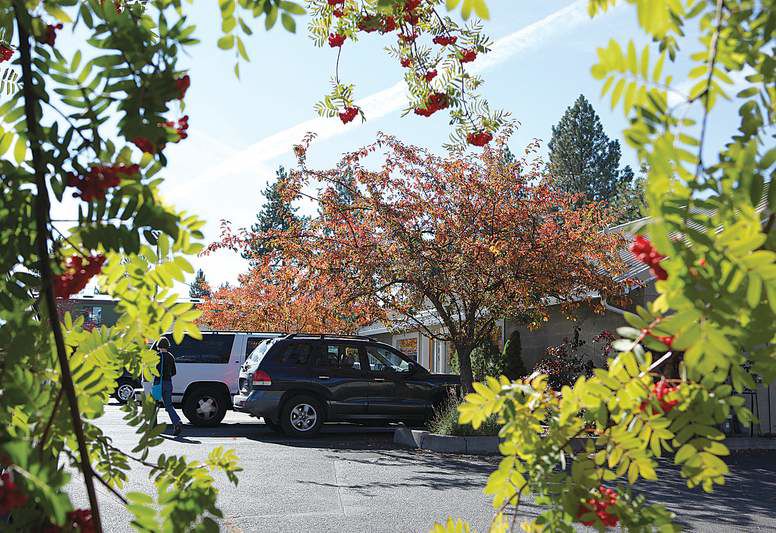Mountain ash adds touch of color
Published 4:00 am Tuesday, November 8, 2011

- Mountain ash’s clusters of orange-red berries are pretty, but be sure your trees are in an out-of-the-way area or you’ll have to deal with regular cleanup.
In the 38 years I have lived in Central Oregon, I can’t remember a more magnificent year for the mountain ash fall fruit display. I actually pulled into a parking lot on Century Drive just to admire a row of the trees. I was in awe of the heavily laden branches, so loaded with fruit clusters I feared the branches would break in a strong wind.
The bright orange-red clusters have been a topic of conversation all over town this year.
However, there is always a bad with a good scenario accompanying beauty in the landscape. In this case, it would be the final demise of the clusters. Birds will have a food source, usually after the leaves have fallen, but at some point there will be a fallen mess to contend with.
I make a point of mentioning this mess as something to remember if you have decided a mountain ash is a landscape addition you can’t live without. Plant it where the cleanup won’t have to be added to the weekly household cleaning list.
I speak from the experience of having two beautiful flowering crab apples lining one side of the driveway. I thrill to the beauty of their spring flower bloom, but they are a real pain in the elbow in the fall when I try to keep the fallen apple mess from getting tracked into the house. Thank goodness for the push broom, the snow shovel and yard debris pickup. Don’t even suggest I make jelly; the apples are barely a half-inch in diameter.
The mountain ash, Sorbus aucuparia, is not related to the true ashes. It belongs to the order Rosaceae. You just never know what is related to what in the plant kingdom. It hardly resembles a strawberry and it certainly doesn’t come close to a rose, but at a family gathering they are all at the same table.
Because the mountain ash is not a member of the ash tree family, it is not susceptible to attack from the Emerald Ash Borer. But fireblight, a plant disease caused by a bacteria, can be destructive without treatment.
Newfoundland popular folklore maintains that a heavy crop of fruit means a hard or difficult winter. In Finland and Sweden, the number of clusters on the trees was used as a predictor of the snow cover.
The big question with locals I have talked to has been what circumstances were present this year to promote such a lush crop of fruit? With some research, I may have found an answer. Fruit production of a given summer is related to the weather conditions of the previous summer — with warm, dry summers increasing the amount of stored sugars available for subsequent flower and fruit production. And in our area, the fact that the flowers didn’t suffer a frost added to the prolific development. It has no predictive value of the winter weather to come.
I would be remiss if I didn’t acknowledge other ornamental trees and shrubs that help provide us with an easy transition into winter. Our minds are diverted from oncoming winter thoughts when we take the time to appreciate the fall colors and possibly think of how we can add them to our landscape.
The old standards are the quaking aspens and the cottonwood/poplar trees, which are better suited for those with acreage than those living on a subdivision lot. The problem with those trees, although they offer brilliant yellow color, is they sucker and produce saplings where they shouldn’t be growing. The exception is the Swedish aspen, which has an upright columnar growth and does not sucker.
The Amur maple, Acer ginnala, is a good choice for a small area and can be used as a hedge. Flame variety has especially fiery foliage in autumn.
Did you take note of the dazzling red leaf color of the Viburnum opulus, American cranberrybush, at the Oregon State University Extension Office in Redmond during its Centennial Open House? The shrub provides seasonal interest with white flowers in spring and maple-like foliage that change from orange to bright red in the fall.
Other old faithfuls seen around town and always available at local nurseries are sumac (mine turns a red-purple in the fall), varieties of barberry (especially flashy are the varieties that are mottled with purple and bright red) and the burningbush, with its scarlet fall color.
I am slowly learning how convenient it is to carry a camera to take a picture and then be able to review it at home for future reference.
In the Oct. 16 comic strip of Frank and Ernest, a deciduous tree is telling two pine trees how ridiculous their needles are: “Nobody with any style wears all green in autumn.” Deciduous tree brags about his colors and how people come from miles around to see him and admits he will eventually lose the leaves. “My limbs are bare, but in the spring I’ll get a new wardrobe and you’ll be wearing the same old thing.” The aside from the pine is “That guy ‘leaves’ but he never goes away!”






